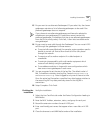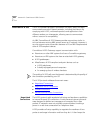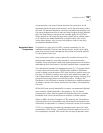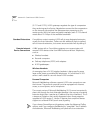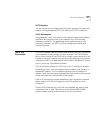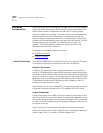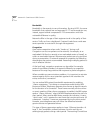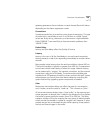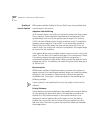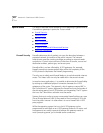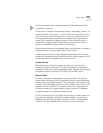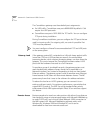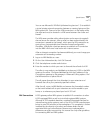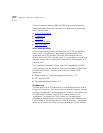
Connection Considerations 405
gateway generates a silence indicator or sends frames filled with silence,
depending on the silence suppression mode.
Connections
Sometimes packet loss is caused by a poor physical connection. This type
of packet loss is more likely to occur in a LAN than in a WAN. Typical
causes are faulty wiring, connectors, and termination. High-bandwidth
LANs (100BASE-T) are more likely to have termination problems than
10BASE-T LANs.
Packet Delay
Latency and jitter delays affect the Quality of Service.
Latency
Latency is the sum of all the fixed delays in an end-to-end connection.
Latency prevents a caller from responding immediately to another caller’s
remarks.
Most people notice latency when the end-to-end delay is above 200 ms.
(The round-trip delay is typically no greater than 400 ms.) Conversations
sound most natural when latency is below this range. Network latency
can be measured by “pinging” the network connection, but the network
connection is only part of the delay. The entire end-to-end delay also
includes the H.323 gateway, firewall or router, and the LAN itself. System
administrators can control some local device delays by controlling the
system load and by upgrading system components as needed.
Jitter
Momentary transmission delays can affect the pace of a conversation
and, if severe, cause the voice to “break up.” This is known as “jitter.”
All voice-over-internet devices have a “jitter buffer” at the receiving end
whose purpose is to absorb jitter. It does this by delaying the first packets
that arrive by some significant amount (from 50 to 200 ms). This delay
creates a window of time for receiving the next group of related samples
which are then forwarded to a callee at a regular rate. However, if some
packets are too late, and exceed the jitter buffer capacity, those packets
are lost and there are gaps in the audio.



